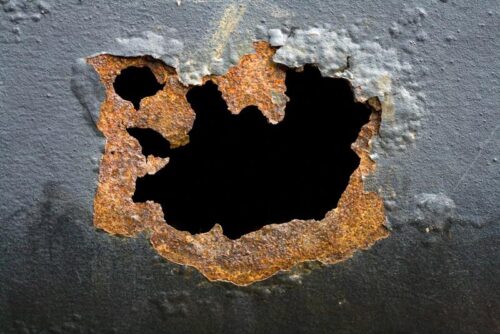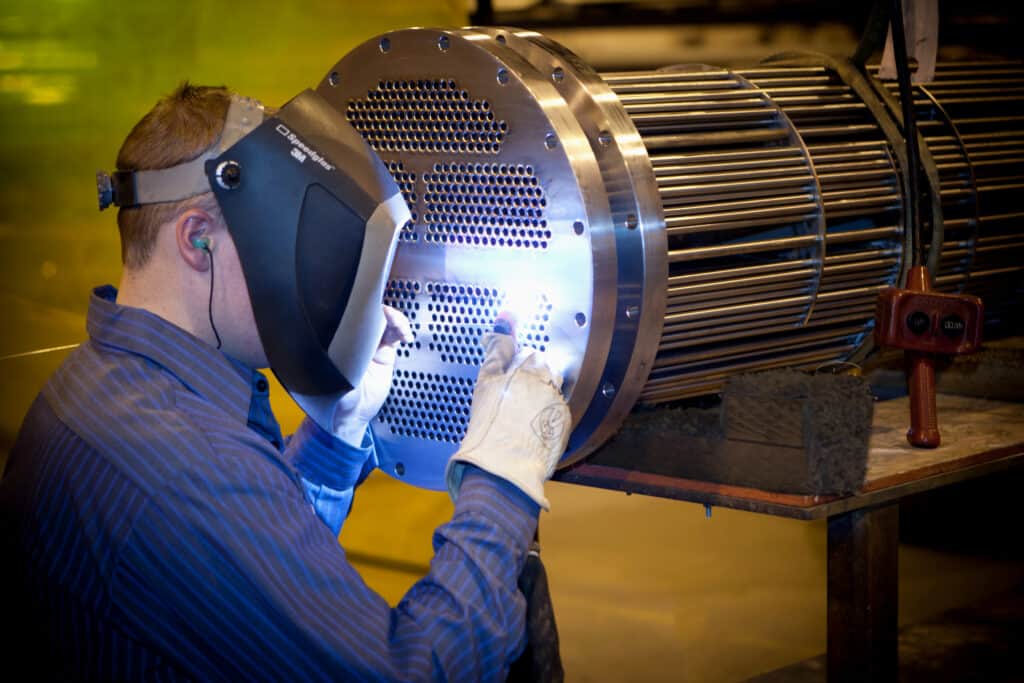Every shell and tube heat exchanger operates with two fluids—one flowing through the tubes and the other in the shell. You likely made a careful selection based on the unique needs of your process and the specific properties of each fluid. But deciding where to allocate each fluid is just as important.
Fluid placement affects heat transfer efficiency, maintenance requirements, and the overall cost of your exchanger and future replacements. To help you make the best decision, ask yourself these five key questions.
1. Which fluid is more likely to foul?
Minimizing fouling is a critical goal in any heat exchanger design. Even with preventative measures in place—such as selecting compatible materials and creating effective cleaning schedules—fouling is often inevitable. When it occurs, you want the cleaning process to be as easy and efficient as possible.
In most cases, the tubes are easier to clean than the shell. For this reason, it’s typically a smart move to place the fluid with a higher fouling potential on the tube side. However, the design of your heat exchanger matters here. For example, U-tube configurations are harder to clean than straight tubes, which could make cleaning the shell side easier in those cases. Evaluating your heat exchanger’s design before deciding will ensure the fouling-prone fluid is in the location that minimizes downtime and maintenance costs.
2. Which fluid is more corrosive?

Corrosion can take a toll on any system, but some damage is easier and cheaper to address than others. Replacing corroded tubes is typically simpler and less costly than replacing the entire shell, which often requires a full exchanger replacement.
For this reason, it’s generally better to place more corrosive fluids on the tube side. Additionally, this strategy allows engineers to select different materials for the tubes and shell, using more corrosion-resistant materials where needed without overengineering the entire system.
Stainless steel tubes often hold up better against corrosive fluids than carbon steel. Selecting the right materials at the design stage can extend the life of your heat exchanger and reduce maintenance expenses.
3. What states are the fluids in?
Understanding the physical state of your fluids during operation is essential for efficient allocation.
- Vapors: Fluids that are or will become vapor should generally be on the shell side due to their larger volume and lower heat-transfer coefficient.
- Non-condensing vapors: If the vapor won’t condense, it’s often better on the tube side to prevent stagnation in the shell, which can reduce heat transfer efficiency.
- Fluids prone to solidification: If there’s a chance the fluid could freeze or solidify, it should be on the tube side, where mechanical cleaning or tube replacement is more feasible. Solidified fluids on the shell side could mean extensive downtime or equipment replacement.
4. Which fluid has the highest pressure?
Handling high-pressure fluids requires thicker containment walls, which can quickly escalate costs. Since building thicker tubes is more cost-effective than building a thicker shell, the high-pressure fluid should typically be allocated to the tube side.
This approach not only keeps costs down but also simplifies future repairs, as damaged tubes can be replaced without overhauling the entire system.
5. How viscous are the fluids?
Viscous fluids usually have low heat-transfer coefficients, which can negatively impact performance. By placing them on the shell side, you can improve heat transfer efficiency through a staggered tube arrangement, which increases turbulence and enhances heat transfer.
However, viscous fluids also tend to have a higher pressure drop, creating challenges such as bypassing baffles or causing vibrations. To mitigate these risks, vibration issues should be addressed during the design phase, ensuring long-term operational reliability.
Smart Fluid Allocation Starts in the Design Phase
Finding the ideal fluid allocation isn’t always straightforward, especially when conflicting factors arise. For instance, if both fluids would benefit from the shell side, you’ll need to carefully prioritize based on the overall design objectives and maintenance strategies.
That’s why early planning is key. When you identify your process fluids before the design phase, engineers can create a custom heat exchanger tailored to your specific needs. This approach helps mitigate potential fouling, vibration, or corrosion issues right from the start.
At Enerquip, our engineers are passionate about problem-solving. When you work with us, you’re not just getting a heat exchanger—you’re getting a team dedicated to helping your system run efficiently and reliably.
Ready to optimize your process? Contact us today to request a quote and start designing your custom solution.
More from the Enerquip Blog
- Horizontal vs. Vertical Baffles: Which to choose for your shell and tube heat exchanger
- How Steam Bustles Improve Efficiency in Shell and Tube Heat Exchangers
- Floating Tubesheet Style Straight Tube Exchangers – Advantages and Types
- Immersion Heaters – Whitepaper
- Shell Side Fluid Challenges: Increasing the Pressure Drop

